#Krishna Classes
Explore tagged Tumblr posts
Text

Heartiest Congratulations and Best Wishes to All CBSE Board Exam 2025 Candidates – From Krishna Classes
The CBSE Board Exams are a crucial milestone in every student’s academic journey. As the 2025 exams approach, Krishna Classes extends its heartiest congratulations and best wishes to all the candidates preparing to give their best.
#CBSE Board Exam 2025#Heartiest Congratulations#Krishna Classes#Maths By Danvir Sir#Danvir Sir Maths#Akrabad#Aligarh#Coaching For Class 12th#coaching for class 10#Class 10th Maths Coaching#Class 12th Maths Coaching
0 notes
Text
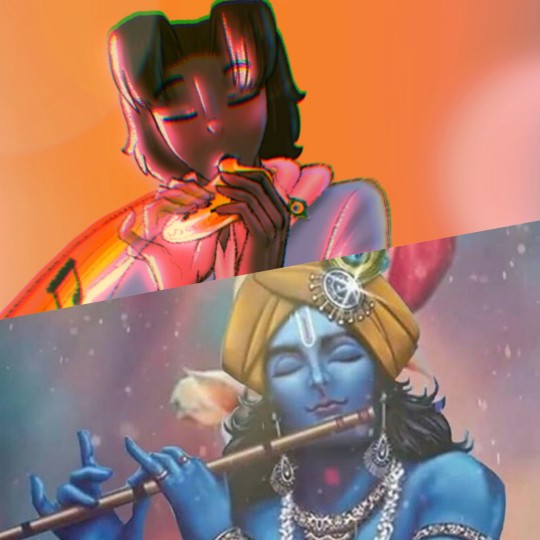
Kalki playing the ocarina and Krishna playing the flute.
(The artwork of Krishna is not mine. If you know the artist pls tag em.)
#This is sort of a hc where Kalki plays the ocarina just like Krishna plays the flute#Kalki also plays the flute sometimes but he mostly takes classes for ocarina and piano#mythology#hindu mythology#hindu mythology art#mythology art#hindu myths#hindu gods#krishna#kalki#krishnablr#desiblr#hindublr#my artwork#my art#artists on tumblr
47 notes
·
View notes
Text
Have a crush in my class idk how to interact have a crush in my class idk how to interact have a crush in my class idk how to interact have a crush in my class idk how to interact
#SAVE ME KRISHNA#what is this#hes kinda cute#i like him because hes funny as fuvk#brb class started#will report more later obv
8 notes
·
View notes
Text
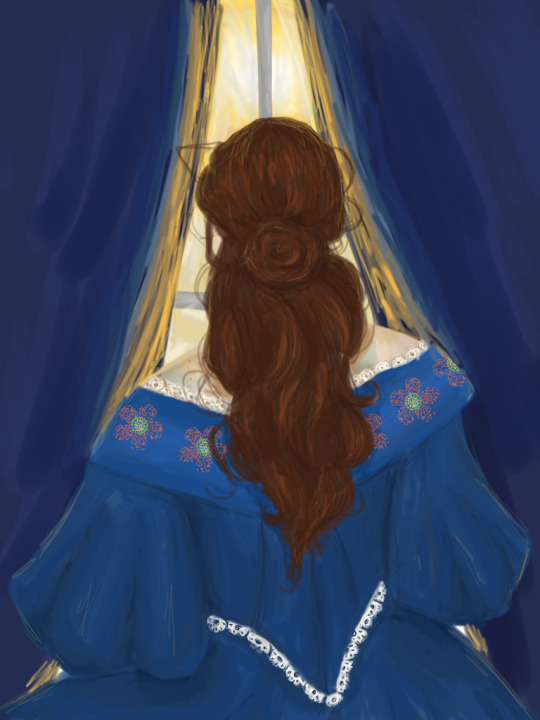
Art I made for a thing I wrote. Shes kinda funky looking but I like it better than first attempt (rip my confidence in drawing faces)
#Art#digital art#digital illustration#Blue#Cobalt#I had to look up cobalt#Cause I kept referencing it with only a vauge idea of what it looked like#I drew flower embroidery cause it was too blue#This goes with a short story that I might post on here#I like it but it's also a little weird#I think it proves I can actually write tho cause the amount of procrastination atm is unreal#I have so many stories I could be writing but I'm just not#I need to tho#And I need to reread the source material cause I liked it when I was younger#I need to learn ancient greek and Latin 😞#On my own cause the schools in my area don't offer it as a subject#They are useless cause they have 2 languages (my native iath ~Cymraeg and French. I took both of them)#My French teacher is so scary but I love her. She peer pressured me to do French#I was in her class in year 7 and every year at parents evening she'd just go 'you better take french' so I did (I like it)#All my options were really chill tbf. Like I did R.E and we literally had like 7-10 people in our class#Love my R .E teacher#My friend reorganised her book shelf like 4 times instead of writing about Brahma#We did Hinduism and Christanity (I wanted to do Buddhism but sadly Christianity is compulsory where I live)#Hinduism was fun tho. Lived learning about Krishna. His backstory really reminded me of Perseus#Grandad learns grandsons gonna kill them. Attempted murder (Kamsa was worse tho) then died at a sports event. Saddest way to go.#Like imagine being a spectator and you still get murdered. My guy you weren't even involved#how did this happen?????
1 note
·
View note
Text
Get Ready to Experience a New Era of Spiritual Connection and Learning: Arambha Tv
In today’s tech advanced world, staying connected to our spiritual roots often feels like a challenge. Yet, the yearning for divine connection and spiritual wisdom remains strong in the hearts of millions. This is where Arambha TV, a pioneering platform dedicated to Sanatan Dharma and Hinduism, is stepping in to bridge the gap between ancient traditions and modern technology.
Click to read more
https://medium.com/@aarambh.tv.org/get-ready-to-experience-a-new-era-of-spiritual-connection-and-learning-arambha-tv-d88ae138dc2c
#live bhajan#online vedas classes#panchang 2024#live krishna leela#sanatna dharma & Hinduism#spiritual journey#devotional#spiritual development#live maha arti#geeta gyan#dharmik updesh
0 notes
Text
there's so many paintings of radha and krishna swapping clothes why can i find nothing written about it
#if anyone knows of any stories about this please let me know#i would love to look into it for one of my classes next year#sort of outside the krishna i've been working on but whatever#text#uni
0 notes
Text
Garbh Sanskar In The Second Trimester: A Comprehensive Guide
#pregnancy#pregnant#garbhsanskar#garbh sanskar music#pregnant women#garbh sanskar mantra#garbhsanskarapp#garbh sanskar#garbh sanskar online classes#pregnancy tips#krishnacomingapp#krishna coming garbh sanskar
0 notes
Photo

Hindu Architecture
Hindu Architecture evolved over the centuries from simple rock-cut cave shrines to massive and ornate temples which spread across the Indian sub-continent and beyond, forming a canonical style which is still adhered to today in modern Hindu temples across the globe.
Essential elements of Hindu architecture are precise and harmonious geometry when viewed from all four sides and above, the square form and grid ground plans, soaring towers, and elaborate decorate sculpture which includes gods, worshippers, erotic scenes, animals, and floral and geometric patterns.
Beginnings & Purpose
From the 1st century CE a new type of worship known as Bhakti or devotional Hinduism spread across the Indian sub-continent, and the old Vedic gods were replaced in importance by deities like Shiva, Vishnu, Krishna, Brahma, and Devi. These gods would become the central figures of Hinduism and their worship required temples where the devoted could offer their thanks and reveal their hopes for a better life.
Buildings were constructed which could house a sacred symbol of a particular god, which could be decorated with sculptural figures of them so recalling episodes from their mythological adventures, and which provided a space for worshippers to leave offerings and perform rituals such as bathing and dancing by professional female dancers (devadasi). The temple was considered the dwelling place of a particular god (devalaya). It was, therefore, a sacred place (tirtha) where heaven and earth meet and, as a god's home, it must be a suitably splendid palace (prasada). The needs of the god would, additionally, be supervised by a dedicated body of priests (pujaris) who attended the temple.
Hindus need not attend regular services, but an occasional walk around the temple interior (circumambulation), known as pradaksina and done in a clockwise direction, was considered auspicious. Further, they could say prayers, look at the god's representation – a specific act of piety known as darsan – and leave offerings of food and flowers (puja). Temples, inevitably, became the very centre of a community and, accordingly, their upkeep was guaranteed by land grants and endowments from the ruling class, as indicated by inscriptions on many temples.
Continue reading...
113 notes
·
View notes
Text
Just saw a tweet about ISKCON excommunicating their own kith and kin, Chinmoy Das. I know this is an unpopular opinion, but the low-key disgust I had for ISKCON is rapidly turning into high-key contempt. First of all, you are a cult that propagates an Abrahamised version of Sanatan Dharma, referring to all other deities as demi-gods, and on top of that, you don’t even adhere to the cult aspect properly—abandoning your own monk in the face of state persecution. I don’t know much about Gaudiya Vaishnavism, but the general pacifism that characterises the Vaishnav sampradaya has become both archaic and orthodox. Coming back to ISKCON—the delusion these people live in is baffling. I had a friend in college who was deep down the ISKCON rabbit hole. She once said that Shiv Bhakts are materialistic and worship Shiva to fulfil their own desires, whereas Krishna Bhakts suffer in this world and reap the rewards of their suffering in Vaikuntha. Like, really? ISKCON receives donations amounting to millions of dollars every year, and their so-called sales executives—or whatever pious marketing gimmick name they use—pressure or pester people into handing over their money. It’s better to donate to the daan peti of your local neighbourhood temple or start Hindu charitable trusts to enable wealthy Hindus to support poor Hindus economically.Let’s be honest—most ISKCON attendees, at least in major metropolitan cities, are middle- to upper-middle-class Hindus. These people are not suffering; they’re just living comfortably. And the actions of ISKCON in Bangladesh only reinforce the idea that they’re not pacifists but cowards—much like Gandhi. Do they really believe that abandoning Chinmoy Das will protect them from radicals?
#desiblr#india#hindublr#hindutva#hinduism#hinduphobia#bangladesh#bangladeshi hindus#rant post#personal rant
94 notes
·
View notes
Text
Hindu gods as students in school ; a modern(ish) au (because I can)
starting with
> Vishnu
• rich guy™
• very calm, the main participant in conflict resolution ✌
• always treats his friends and pays for everything
• middle bencher, not fully interested in class but also not uninterested.
> Shiva
• ANGER ISSUES
• he looks really intimidating at first but once you get to know him, he is goofy
• is usually chill until he is not 💀
• backbencher for sure
> Brahma
• topper of the class
• that respected, parent friend™
• the oldest in class
• he is rarely seen because he is always studying
• obviously a front bencher
> Rama
• class president ™
• literally the kindest, most calm guy ever seen
• helps everyone in the class with everything
• he is literally good at everything
• a front bencher
> Krishna
• troublemaker ™
• always interrupts the teacher to ask funny questions
• but really smart, always gets A+ grades
• he invented backbencher culture.
• the ultimate rizzler
> Venkateshwara
• Some guy™
• he's always there, but you probably will never notice him
• representative emoji: 🧍♂️
• he's probably just an introvert
Bonus -
> Ganesha
• he's that adorable junior everyone loves
• really loves food, so he always has snacks
• loves to sleep in class
• totally street smart 😎
#idk what im doing#desiblr#hindu mythology#hindublr#hindu mythology memes#desi memes#hindu gods#incorrect hindu mythology
572 notes
·
View notes
Text
What I want to know is how this false notion became popular to begin with and WHY we are taught this at all.
I loathe Karn. He's a bitchy victim card player. But somehow, everyone in my family, all of my friend group, INCLUDING MOON BOY, think he's some tragic warrior???????? They believe the serials over BORI??????
#IM SORRY BITCH WTF-#like even I was taught by my parents that Karna was a 'good guy with a bad boss'#and even the famous sivaji ganesan movie from the 70s portrayed him as the good guy?!#and showed Krishna as a straight up villain?!#it was so bad that the movie#combined with iskon's general weirdness and getting publicly shamed by my balavihar teacher for being the ONLY kid in class#whose ishta deva was not Krishna#gave me a visceral hatred of him that is hard to shake even now#HOW-#HOW did the narrative get this mixed up?#where did this interpretation come from?!
53 notes
·
View notes
Text
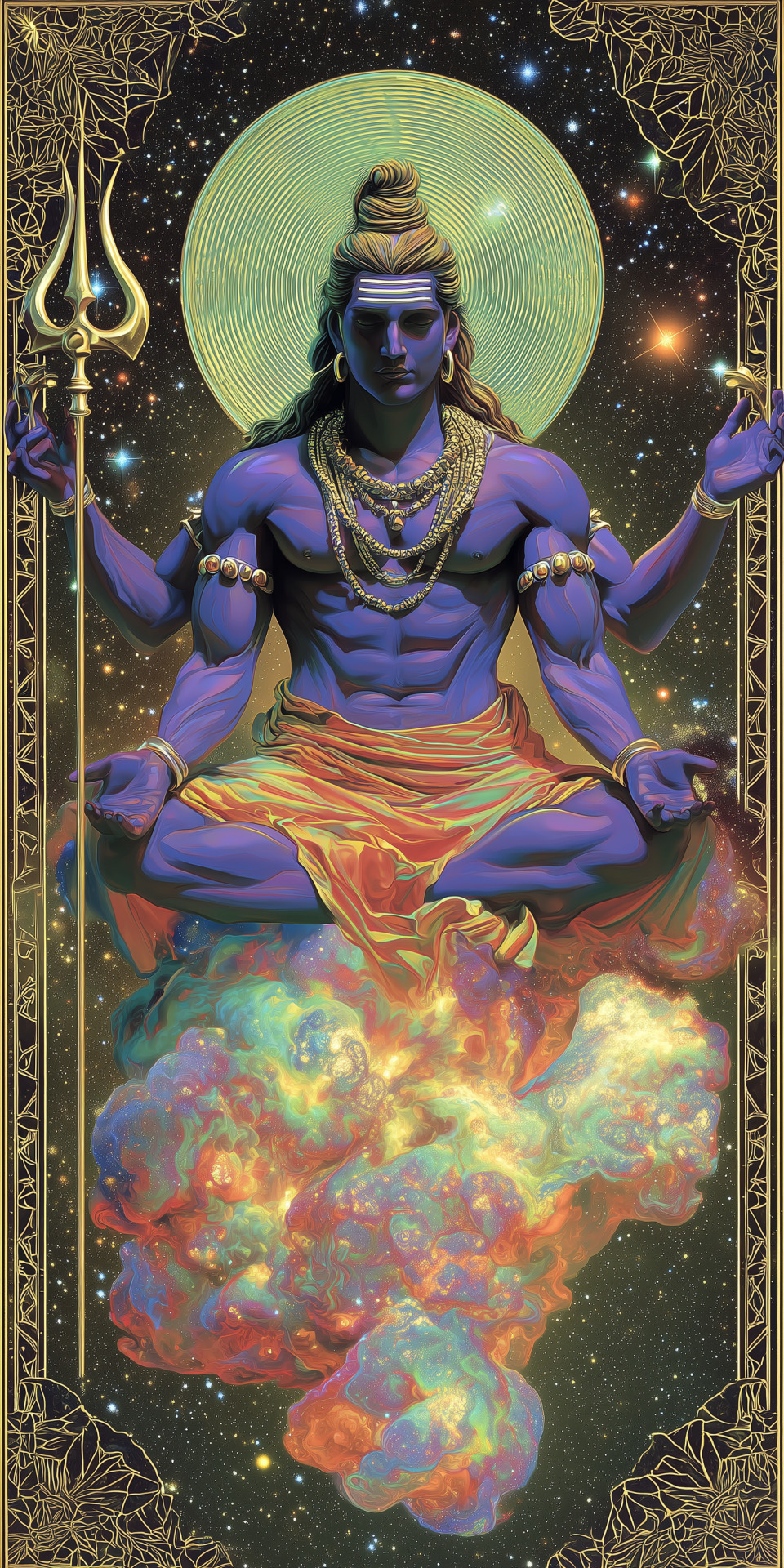
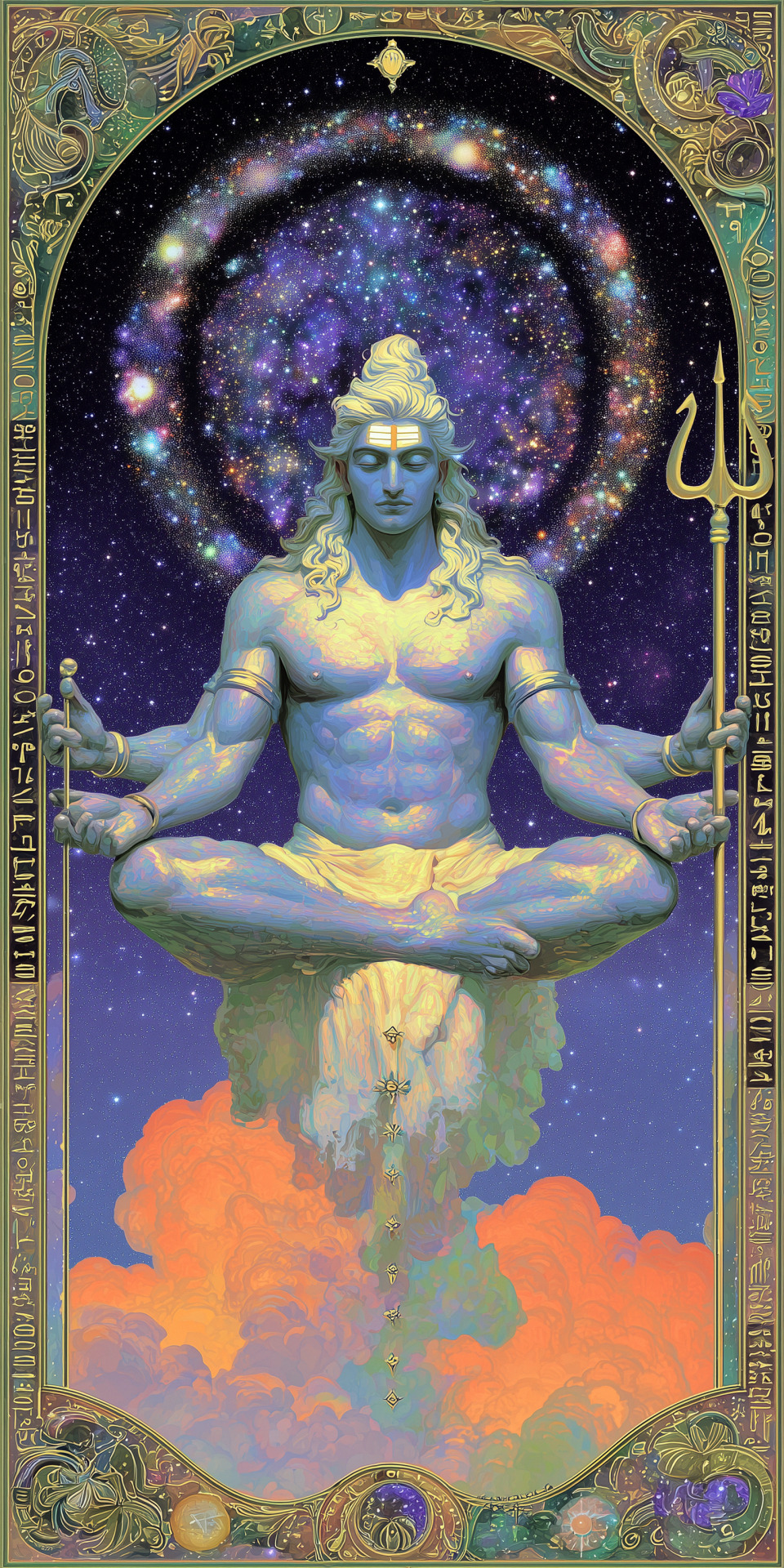
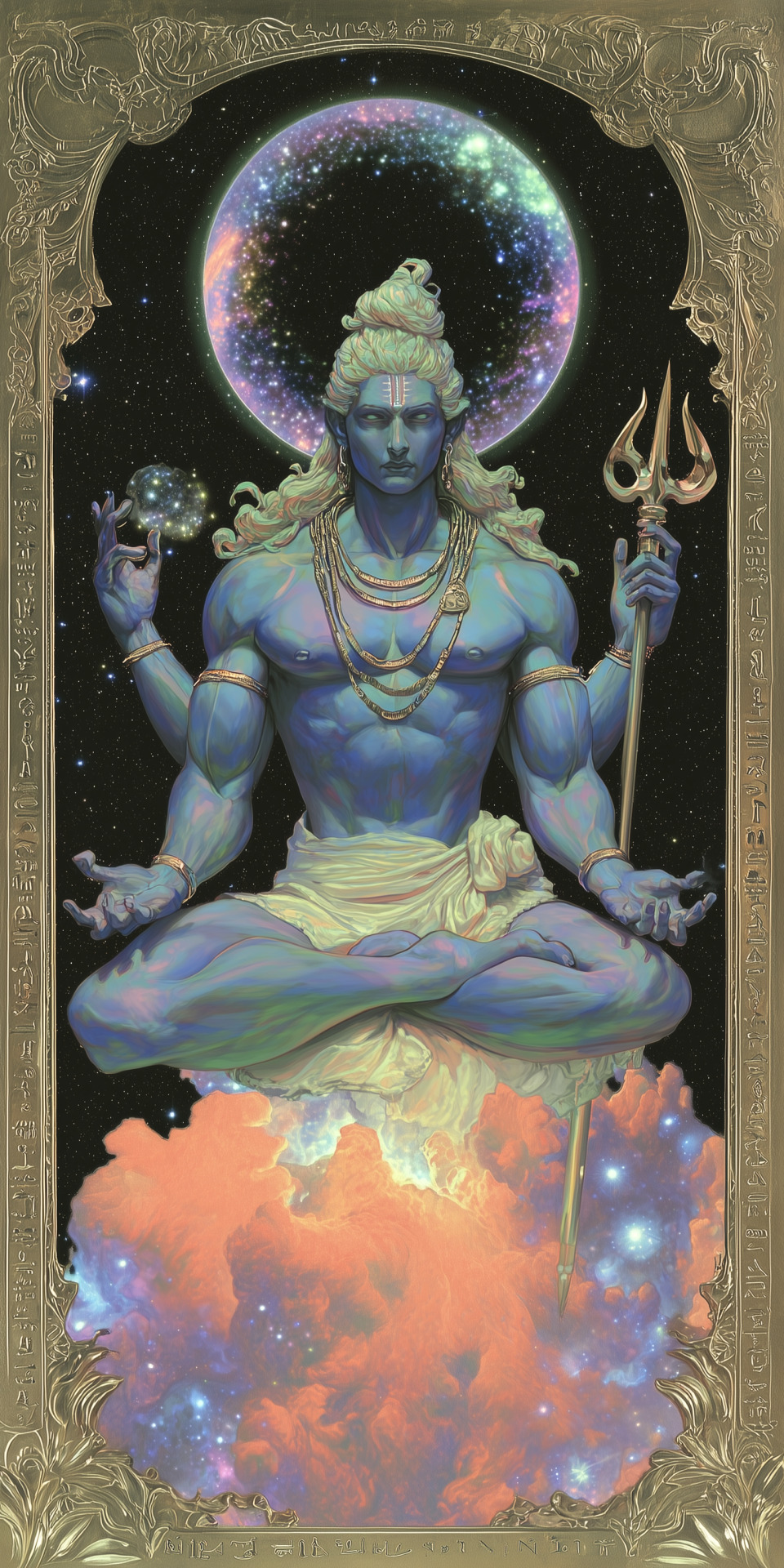
"Shiva is chidambaram, like the inner sky. Shiva is the inner sky of consciousness." - Sri Sri Ravi Shankar Lord Shiva Talon Abraxas
Shiva, The Auspicious One
Shiva is among the most widely worshiped deities in India. With names such as Mahadeva (“the great god”) and Nataraja (“the king of dancers”), he is venerated in ancient holy cities like Benares, where Shaivites (as his worshipers are called) devote their lives to him, viewing him as the Supreme Lord.
The fact is, he is supreme. As the scriptures say, “Srimad-Bhagavatam is supreme among Puranas just as the Ganga is the greatest of all rivers, Lord Acyuta [Vishnu] the best among deities, and Lord Sambhu [Shiva] the greatest among devotees of Lord Vishnu [vaisnavanam yatha sambhu].” (Srimad-Bhagavatam 12.13.16) According to this and similar statements, Shiva may correctly be considered the greatest—at least among devotees—but among gods the supreme is Vishnu. This is made clear as far back as the Rg Veda (1.22.20): “The lotus feet of Vishnu are the supreme objective of all the demigods. Those lotus feet of the Lord are as enlightening as the sun in the sky.”
Shaivites, however, tend to see Shiva not just as the greatest devotee but as God Himself. There is some basis for this in scripture. In the Bhagavatam (4.7.50) Lord Vishnu Himself says, “Brahma, Lord Shiva, and I are the supreme cause of the material manifestation. I am the Supersoul, the self-sufficient witness. But impersonally there is no difference between Brahma, Lord Shiva, and Me.”
In other words, all three divinities are one because they are all avataras, or descents of the Supreme, for the creation, maintenance, and annihilation of the material world. In this context, they are known as guna-avataras, and they preside over the modes of passion (embodied by Brahma, the creator), goodness (embodied by Vishnu, the maintainer), and ignorance (embodied by Shiva, the destroyer). All three of these avataras are considered aspects of the same principle of Godhead.
The Mahabharata too (Anusasana-parva 135) says that Vishnu and Shiva are nondifferent and even counts the names Shiva, Sarva, Sthanu, Isana, and Rudra—names traditionally identified with Shiva—among the thousand names of Vishnu. Such identification between Shiva and the Supreme Lord seemingly gives weight to the idea of contemporary Hinduism that all the gods mentioned in the Vedic literature are one.
But a close study of scripture shows that while there is reason to see Shiva as nondifferent from Vishnu, there is also reason to distinguish strongly between them. According to Bhagavad-gita, which is accepted by nearly all classes of transcendentalists in India—including Vaisnavas and Shaivites—Vishnu (Krishna) is the ultimate Godhead, to whom even Shiva must bow down. This is not a matter of opinion or sectarian prejudice. Krishna identifies Himself as the source of all material and spiritual worlds, and Arjuna confirms that Krishna is indeed supreme (Bg. 10.12). Krishna is “the God of all the gods” (devesa, Bg. 11.37).
In countless incidents from the Puranas, Shiva is clearly seen to be Vishnu’s devotee. For example, there is the story of Vrkasura, a demon who practiced severe austerities and then asked Shiva for a boon—the power to kill at once any living being whose head Vrkasura would merely touch. Shiva granted the boon, but was soon to regret his decision, for Vrka came after him to try out the newfound power. Lord Shiva ran to all parts of the universe to escape this power-mad devotee and finally ended up at the door of the kingdom of Vishnu.
Hearing the words of a frightened Shiva, Vishnu devised a plan to help him. Vishnu appeared directly before Vrkasura and told him Shiva was not to be trusted. “Shiva is fond of joking and even lying,” said Vishnu. “I am sure he is not telling you the truth. He was just teasing you. Touch your own head, and you will see that nothing will happen.”
Vrka, of course, touched his own head and died. But the point of this story, in the present context, is Vishnu’s superiority over Shiva, who could not resolve the problem on his own. After racing through the entire material cosmos to escape Vrkasura, Shiva sought refuge in Vishnu, the Supreme Personality of Godhead.
To counter this, Shiva devotees cite traditions in which Rama, for example, is seen as a devotee of Shiva. This would make an avatara of Vishnu subservient to Shiva, and thus support the tenets of Shaivism. But upon closer study Rama’s worship of Shiva turns out to be a later tradition, not supported in Valmiki’s Ramayana. Moreover, even these later traditions explain that Rama became a devotee of Shiva only out of etiquette: Rama wanted to become a greater devotee of Shiva than the evil Ravana was, and then ask Shiva for permission to defeat Ravana.
The Ramayana offers many stories about the glories of Shiva—his destruction of Daksa’s sacrifice, his marriage with Uma (Parvati), his drinking of the ocean of poison, his killing of the demon Andhaka, his cursing of Kandarpa—but ultimately the Ramayana makes the supremacy of Rama quite clear. Rama (as an incarnation of Vishnu) is supreme.
The differences between Shiva and Vishnu should be further underlined. As Srila Prabhupada says (Srimad-Bhagavatam 3.9.16, purport),
“Of the three principal agents controlling the three modes of material nature, Vishnu is the Almighty; even though He is within material nature for the purpose of maintenance, He is not controlled by the laws of material nature. The other two, Brahma and Shiva, although almost as greatly powerful as Vishnu, are within the control of the material energy of the Supreme Lord.”
Shiva is superior to Brahma, who is an empowered soul (jiva), but Shiva is not quite on the same level as Vishnu. It is therefore said that Shiva is a unique living being who merits his own category, known as Shiva-tattva.
To clarify Lord Shiva’s position, the Brahma-samhita (5.45) offers an analogy: “When milk is transformed by acids into yogurt, the yogurt is neither the same as nor different from the milk. I adore the primeval Lord Govinda [Krishna, Vishnu], of whom Lord Shiva is a transformation for performing the work of destruction.”
Though milk and yogurt are essentially nondifferent, yogurt is a product of milk. One can use milk to make ghee, cheese, ice cream, or yogurt, but one cannot turn yogurt into milk. Clearly, then, Shiva’s divinity is intimately connected with, even dependent upon, his relationship to Vishnu.
This is made clearer still in the Bhagavatam (3.28.22): “The blessed Lord Shiva becomes all the more blessed by bearing on his head the holy waters of the Ganges, which has its source in the water that washed the Lord’s lotus feet.”
Srila Prabhupada comments, “Lord Shiva is important because he is holding on his head the holy Ganges water, which has its origin in the footwash of Lord Vishnu.
“In the Hari-bhakti-vilasa, by Sanatana Gosvami, it is said that anyone who puts the Supreme Lord and the demigods, including Lord Shiva and Lord Brahma, on the same level at once becomes a pasandi, or atheist. We should never consider the Supreme Lord Vishnu and the demigods to be on an equal footing.”
So, theologically, Shiva is both God and yet different from God as well. Because of Shiva’s intimate contact with the quality of ignorance and with matter (which is innately ignorant), the living beings in this world cannot receive the same spiritual restoration by worshiping him as by worshiping Vishnu.
And yet they try. As mentioned earlier, the worshipers of Shiva are second in number only to the worshipers of Vishnu. Shaiva Siddhanta, a form of Shiva worship found mainly in South India, is a force to be reckoned with, and Vira Shaivism (or Lingayatism), another form of the religion, is popular in the South Indian state of Karnataka.
There are other forms of Shiva worship as well, but the only authorized form comes down in the Rudra Sampradaya, also known as the Vishnusvami Sampradaya, an authorized Vaisnava lineage in which Shiva is worshiped as the greatest devotee of Vishnu. Its adherents say that ultimate liberation comes from devotion to Vishnu. And Shiva, they say, showed how to be the perfect devotee. Even Shiva himself confirms that one can achieve the supreme destination only by the mercy of Vishnu. Lord Shiva says, mukti-pradata sarvesam Vishnur eva na samsayah: “There is no doubt that Vishnu is the deliverer of liberation for everyone.”
24 notes
·
View notes
Text
From Which Month Should You Start Garbh Sanskar? | Krishna Coming Garbh Sanskar
#garbh sanskar music#garbh sanskar#pregnant women#garbhsanskarapp#krishna coming garbh sanskar#pregnancy#pregnant#garbh sanskar online classes#pregnancy tips#garbh sanskar mantra
0 notes
Photo

Hindu Architecture
Hindu Architecture evolved over the centuries from simple rock-cut cave shrines to massive and ornate temples which spread across the Indian sub-continent and beyond, forming a canonical style which is still adhered to today in modern Hindu temples across the globe.
Essential elements of Hindu architecture are precise and harmonious geometry when viewed from all four sides and above, the square form and grid ground plans, soaring towers, and elaborate decorate sculpture which includes gods, worshippers, erotic scenes, animals, and floral and geometric patterns.
Beginnings & Purpose
From the 1st century CE a new type of worship known as Bhakti or devotional Hinduism spread across the Indian sub-continent, and the old Vedic gods were replaced in importance by deities like Shiva, Vishnu, Krishna, Brahma, and Devi. These gods would become the central figures of Hinduism and their worship required temples where the devoted could offer their thanks and reveal their hopes for a better life.
Buildings were constructed which could house a sacred symbol of a particular god, which could be decorated with sculptural figures of them so recalling episodes from their mythological adventures, and which provided a space for worshippers to leave offerings and perform rituals such as bathing and dancing by professional female dancers (devadasi). The temple was considered the dwelling place of a particular god (devalaya). It was, therefore, a sacred place (tirtha) where heaven and earth meet and, as a god's home, it must be a suitably splendid palace (prasada). The needs of the god would, additionally, be supervised by a dedicated body of priests (pujaris) who attended the temple.
Hindus need not attend regular services, but an occasional walk around the temple interior (circumambulation), known as pradaksina and done in a clockwise direction, was considered auspicious. Further, they could say prayers, look at the god's representation – a specific act of piety known as darsan – and leave offerings of food and flowers (puja). Temples, inevitably, became the very centre of a community and, accordingly, their upkeep was guaranteed by land grants and endowments from the ruling class, as indicated by inscriptions on many temples.
Continue reading...
45 notes
·
View notes
Text
Arjun, Subhadra and Krishna(a)
The moment Arjuna reaches Prabhasa, after twelve long years of travel, Krishna appears, and practically drags him back to Raivataka. Here, I kind of have to mention, Krishna and Arjuna, when together, have no sense of personal space. This is, however, the first time we see the level of their intimacy, at least in Mahabharata. For that one day they pretty much sit, eat, talk and sleep on the same asana. Even when Krishna then takes him back to Dwarika, their closeness only increases, much to, I imagine, the discomfort of the more traditional parliamentarians.
Then comes a festival on Raivataka, where Arjuna sees Subhadra, and immediately goes mad, much to the abject delight of Krishna. He in fact takes great pleasure, to tease the heck out of Arjuna at this point.
Arjuna however, doesn’t like Krishna’s initial idea to ask Vasudeva for permission. He does understand that no matter how liberal their upper-class society is at this moment, Arjuna and Subhadra are still first cousins, and we in fact see the Yadavas later object to the kidnapping based on this fact alone.
Krishna, in response, does say something a little controversial, “There’s no point in betting on a swayamvara, as she’s a young girl, and her mind may be fickle. Hence, kidnapping is the best option.” This was probably (and I’m reaching here) less about Krishna’s misogyny and more about the Yadavas’ (frankly, kind of valid) issue with Arjuna and Subhadra’s blood-family situation.
Now, interestingly, after two marriages, for his fourth one, Arjuna decides that he must take permission from Yudhishthira (was he afraid that Yudhishthira might hand him back to Balarama later, if he didn’t sort this beforehand?)
And hence, shubhasya sheeghram, the next morning Arjuna is tip-top dresses and armed, and picks up Subhadra when she’s on her way back from Raivataka.
Obviously Dwarika’s parliament is in uproar. Balarama, however is the only person to defer to common sense, as he hands over the ‘mic’ to Krishna, albeit after cussing Arjuna out pretty thoroughly. Krishna gives a few reasons (a bit flawed, but okay) for his support and recommendation for peace:
He doesn’t like an arranged marriage, as he feels it is as though the bride is treated like an animal who is ‘sold’ from one family to another (don't like how you got there, but congrats, I agree).
In a swayamvara, there’s no telling what Subhadra might to (or be made to do).
Arjuna is a kshatriya, and he doesn’t look good getting married in a ‘tame’, arranged ceremony, and the kidnapping raises the ‘value’ of Subhadra herself (like I said, flawed)
If the Yadavas now try to stop him, and an entire army (known for being tide-turning mercenaries btw), go after and get defeated by a single man, how does that look, before the international community?
Kunti’s gotra changed once she was adopted by Kuntibhoja, so legally, Arjuna and Subhadra are no longer first cousins (but still second or third, though!)
Arjuna is still, biologically their first cousin, so fighting a battle against family would be counterproductive, and make other kingdoms look down upon them (ironic, and you just said he wasn't! xD).
Arjuna is a great warrior, and any kingdom would be lucky to make him a permanent ally.
In Kashiram Das’s version, we see Subhadra in a more active role. Here, Daruka, who was driving the chariot, refuses to let Arjuna fight when Krishna’s sons challenge him. So, Arjuna ties him up, and hands over the reins to Subhadra, as he goes ahead and defeats everybody.
Well, after one year of marriage, Arjun remembers his vanavasa again, and goes to Pushkar, to spend the remaining time.
Then finally, he returns to Indraprastha, and straight to Draupadi, who promptly directed him to return to his ‘newer-model’ and stay there, among other things. So, Arjun did exactly that.
Interestingly, it is his idea to dress up Subhadra as a gopa woman, and send her in to mollify Draupadi instead. It works, only somewhat. Draupadi is impressed with the gesture, but she is still angry. She says to Subhadra, “Nihsapatno-stu te pati.” This on-the-face translates to ‘may your husband not have any enemies’. However, sapatn[o/i] also means co-wife (‘sautan/shotin’).
Dr. Bhaduri interprets this as: ‘may you have no co-wives’, by which Draupadi still keeps Arjuna on the rack, as an extension of her previous comment.
I also like the other reading which is: ‘may your husband have no co-husbands’: a covert expression of how tired she was starting to get of her husbands’ antics and marriages.
Krishna also arrives shortly (primarily for damage control with Draupadi, I imagine), but also, with huge military help, which he practically ‘launders’ into the Pandava artillery disguised as wedding presents, since Balarama wouldn’t let him otherwise (Rohini is Shantanu’s brother Bahlika’s daughter/granddaughter, so that’s where his neutrality mainly comes from). This is also the time when Krishna is properly promoted from ‘weird generous acquaintance’ to ‘best friend forever’ in Draupadi’s books.
30 notes
·
View notes
Text

Join Best Coaching Institute, Akrabad Aligarh. Contact For More Information: 91 9927081897
🎓 KRISHNA CLASSES, Akrabad, Aligarh: Your Pathway to Academic Excellence
In the heart of Akrabad, Aligarh, KRISHNA CLASSES has emerged as a beacon of quality education, guiding students from Class 9 to 12 towards academic success. Under the expert mentorship of Danvir Sir (M.Sc., B.Ed.), with over 14 years of teaching experience, the institute has become synonymous with excellence in Mathematics and Science education.
🧑🏫 Experienced Faculty
Danvir Sir's profound knowledge and innovative teaching methods have earned him the reputation of being one of the best Mathematics teachers in Aligarh. His approach simplifies complex concepts, making learning an engaging experience.
🧮 Specialized Mathematics Batches
Recognizing the challenges students face in Mathematics, KRISHNA CLASSES offers dedicated batches focusing on problem-solving techniques and conceptual clarity, ensuring students build a strong foundation.
#maths by danvir sir#danvir sir maths#best maths teacher in aligarh danvir sir#mathematics#best coaching in akrabad aligarh#krishna classes akrabad aligarh#science#coaching#akrabad#aligarh#best mathematics coaching in aligarh#Best Mathematics Coaching In Akrabad Aligarh
0 notes